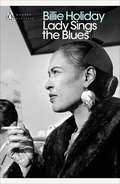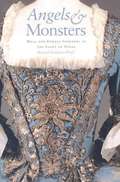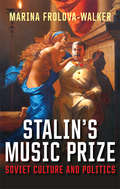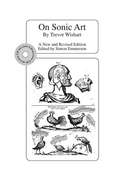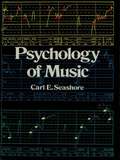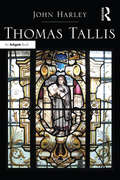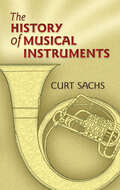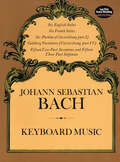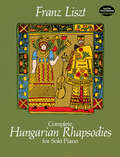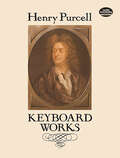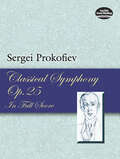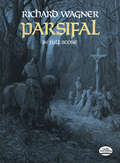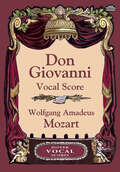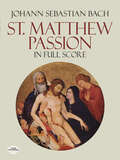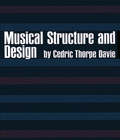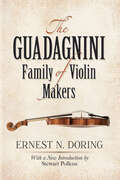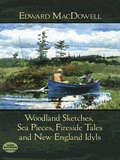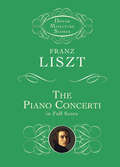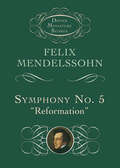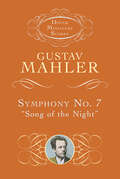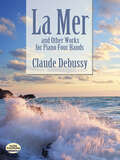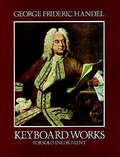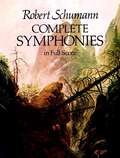- Table View
- List View
Lady Sings the Blues: Lady Sings The Blues (Penguin Modern Classics)
by Billie Holiday"I've been told that no one sings the word 'hunger' like I do. Or the word 'love'."Lady Sings the Blues is the inimitable autobiography of one of the greatest icons of the twentieth century. Born to a single mother in 1915 Baltimore, Billie Holiday had her first run-in with the law at aged 13. But Billie Holiday is no victim. Her memoir tells the story of her life spent in jazz, smoky Harlem clubs and packed-out concert halls, her love affairs, her wildly creative friends, her struggles with addiction and her adventures in love. Billie Holiday is a wise and aphoristic guide to the story of her unforgettable life.
Angels & Monsters: Male and Female Sopranos in the Story of Opera, 1600–1900 (PDF)
by Richard Somerset-WardDuring its first two centuries, opera was dominated by sopranos. There were male sopranos, or castrati, whose supercharged voices (female vocal cords powered by male lungs) were capable of feats of vocalism that are hard to imagine today. And there were female sopranos, or prima donnas, whose long battle for social acceptance and top billing was crowned in the early nineteenth century when the castrati disappeared from the opera stage and left them supreme. Whether they were male or female, these singers were amazing virtuosi, perhaps the greatest singers there have ever been - "angels." Unfortunately, some of them (and often the most famous) were also capable of behaving extremely badly, both on and off stage - "monsters." This book tells their colorful stories. Besides providing fascinating anecdotes about some of those who graced and disgraced the operatic stage, Richard Somerset-Ward tells the story of their greatest glory-the singing tradition they founded and perfected, which we know as bel canto and which is still the backbone of operatic singing today. Rich in musical, social, and cultural lore, Angels and Monsters illuminates a unique and vanished tradition.
Stalin’s Music Prize: Soviet Culture and Politics
by Marina Frolova-WalkerMarina Frolova-Walker's fascinating history takes a new look at musical life in Stalin's Soviet Union. The author focuses on the musicians and composers who received Stalin Prizes, awarded annually to artists whose work was thought to represent the best in Soviet culture. This revealing study sheds new light on the Communist leader's personal tastes, the lives and careers of those honored, including multiple-recipients Prokofiev and Shostakovich, and the elusive artistic concept of "Socialist Realism," offering the most comprehensive examination to date of the relationship between music and the Soviet state from 1940 through 1954.
On Sonic Art (Contemporary Music Studies #Vol. 12.)
by Trevor Wishart Simon EmmersonIn this newly revised book 'On Sonic Art', Trevor Wishart takes a wide-ranging look at the new developments in music-making and musical aesthetics made possible by the advent of the computer and digital information processing. His emphasis is on musical rather than technical matters. Beginning with a critical analysis of the assumptions underlying the Western musical tradition and the traditional acoustic theories of Pythagoras and Helmholtz, he goes on to look in detail at such topics as the musical organization of complex sound-objects, using and manipulating representational sounds and the various dimensions of human and non-human utterance. In so doing, he seeks to learn lessons from areas (poetry and sound-poetry, film, sound effects and animal communication) not traditionally associated with the field of music.
On Sonic Art (Contemporary Music Studies #Vol. 12.)
by Trevor Wishart Simon EmmersonIn this newly revised book 'On Sonic Art', Trevor Wishart takes a wide-ranging look at the new developments in music-making and musical aesthetics made possible by the advent of the computer and digital information processing. His emphasis is on musical rather than technical matters. Beginning with a critical analysis of the assumptions underlying the Western musical tradition and the traditional acoustic theories of Pythagoras and Helmholtz, he goes on to look in detail at such topics as the musical organization of complex sound-objects, using and manipulating representational sounds and the various dimensions of human and non-human utterance. In so doing, he seeks to learn lessons from areas (poetry and sound-poetry, film, sound effects and animal communication) not traditionally associated with the field of music.
Psychology of Music
by Carl E. SeashoreBetween the physical world of vibration, as measured by apparatus, and the world of consciously heard music there is a third area of investigation. Our auditory apparatus and/or mind separates different instruments and tones, hears some vibrations but not others, adds tones to fill out the sound spectrum, etc. This middle ground is the province of the psychology of music, a subject about which even many physical scientists know little.This introduction, by the developer of the Seashore test of musical ability, is a thorough survey of this field, the standard book for psychologists specializing in the area, for the school, and for interested musicologists. It opens with the musical mind and with a series of chapters on music as a medium: vibrato, pitch, loudness, duration, timbre, tone, consonance, volume, and rhythm, dealing with each from the special point of view of the role of psychology. It then moves to such factors as learning, imagining, and thinking in music; the nature of musical feeling; the relative sound patterns of specific instruments and the human voice; measures of musical talent; inheritance of musical ability; primitive music; the development of musical skills; and musical aesthetics.This wealth of material is supplemented with dozens of oscillograms and other sound-pattern charts recorded from actual play and singing by Jeritza, Caruso, Paderewski, Szigeti, Rethberg, Menuhin, Martinelli, and other artists. An appendix cites two attitudes toward the evaluation of musical talent and over 200 bibliographic references.
Thomas Tallis: His Life And Music
by John HarleyJohn Harley’s Thomas Tallis is the first full-length book to deal comprehensively with the composer’s life and works. Tallis entered the Chapel Royal in the middle of a long life, and remained there for over 40 years. During a colourful period of English history he famously served King Henry VIII and the three of Henry’s children who followed him to the throne. His importance for English music during the second half of the sixteenth century is equalled only by that of his pupil, colleague and friend William Byrd. In a series of chronological chapters, Harley describes Tallis’s career before and after he entered the Chapel. The fully considered biography is placed in the context of larger political and cultural changes of the period. Each monarch’s reign is treated with an examination of the ways in which Tallis met its particular musical needs. Consideration is given to all of Tallis’s surviving compositions, including those probably intended for patrons and amateurs beyond the court, and attention is paid to the context within which they were written. Tallis emerges as a composer whose music displays his special ability in setting words and creating ingenious musical patterns. A table places most of Tallis’s compositions in a broad chronological order.
Thomas Tallis: His Life And Music
by John HarleyJohn Harley’s Thomas Tallis is the first full-length book to deal comprehensively with the composer’s life and works. Tallis entered the Chapel Royal in the middle of a long life, and remained there for over 40 years. During a colourful period of English history he famously served King Henry VIII and the three of Henry’s children who followed him to the throne. His importance for English music during the second half of the sixteenth century is equalled only by that of his pupil, colleague and friend William Byrd. In a series of chronological chapters, Harley describes Tallis’s career before and after he entered the Chapel. The fully considered biography is placed in the context of larger political and cultural changes of the period. Each monarch’s reign is treated with an examination of the ways in which Tallis met its particular musical needs. Consideration is given to all of Tallis’s surviving compositions, including those probably intended for patrons and amateurs beyond the court, and attention is paid to the context within which they were written. Tallis emerges as a composer whose music displays his special ability in setting words and creating ingenious musical patterns. A table places most of Tallis’s compositions in a broad chronological order.
The History of Musical Instruments
by Curt SachsThis first comprehensive history of musical instruments, this book ranges from prehistoric times to the 20th century. It traverses five continents and every stage of evolution, from primitive rattles and bull-roarers to the electric organ. Author Curt Sachs, one of the world's most distinguished musicologists, combines rich scholarship with personal insight in a remarkable fusion of music, anthropology, and the fine arts.Beginning with the earliest manifestations of rhythm, Sachs explores the association of sound with primitive rites of fertility, life, death, and rebirth. He traces the evolution of folk and ritual instruments to tools of entertainment and art, the rise of a professional class of singers and musicians, and the musical revolution that flowered during the Renaissance. Sachs chronicles the foundation of the modern orchestra during the baroque period and its subsequent development, concluding with the modern-day rise of electric and jazz instruments.A pleasure to read as well as a valuable resource, this classic work is enhanced with 24 plates and 167 illustrations.
Keyboard Music
by Johann Sebastian BachThe renowned Bach-Gesellschaft, founded in 1850 to collect, edit, and publish all the known works of J. S. Bach, devoted fifty years to its monumental task. It succeeded so well in tracking down Bach's heritage, establishing authenticity, and transcribing accurate texts that it still remains the primary source for Bach's music., Unfortunately, it has always been a fantastically expensive publication, accessible only in the largest libraries.This volume reprints in full, directly from the Bach-Gesellschaft volumes, important keyboard music. It contains the full texts of the Six English Suites, the Six French Suites, Six Partitas from the Clavierübung, the Goldberg Variations, and the Two- and Three-Part Inventions and Sinfonias,The music has been reproduced in large, clear type, directly from the original editions, for maximum clarity. Designed as a playing edition, it will be a necessary book to every performer on the harpsichord or piano, every music student and musicologist, as well as to serious music listeners.
Complete Hungarian Rhapsodies for Solo Piano
by Franz LisztUnrivaled as a virtuoso pianist in his own day -- and perhaps still -- Franz Liszt was a composer of daring originality. He introduced new conceptions of harmony and melody and made radical innovations in piano technique. In a long and prolific career, he produced over 400 works for piano -- brilliant compositions with flashes of eloquence and energy that evoke a full, rich orchestral sound. Best known and best loved are the Hungarian Rhapsodies.Reproduced directly from an authoritative Russian edition of the composer's works, this inexpensive and sturdily bound volume presents the complete Hungarian Rhapsodies for solo piano: No. 1, in C-sharp Minor; No. 2, in C-sharp Minor; No. 3, in B-flat Major; No. 4, in E-flat Major; No. 5, in E Minor; No. 6, in D-flat Major; No. 7, in D Minor; No. 8, in F-sharp Minor; No. 9 (Pester Karneval; "Carnival in Pest"), in E-flat Major; No. 10, in E Major; No. 11, in A Minor; No. 12, in C-sharp Minor; No. 13, in A Minor; No. 14, in F Minor; No. 15, (Rákóczy March), in A Minor; No. 16, in A Minor; No. 17, in D Minor; No. 18, in C-sharp Minor; and No. 19, in D Minor.This edition features English translations of all headings and footnotes that originally appeared in Russian. Published in association with the American Liszt Society, this edition offers all the quality features musicians have long associated with Dover: clear reproduction of musical notation, ample space for analysis, notes, fingerings, etc. Classical pianists, students, teachers, and lovers of music will applaud this handsome volume for playing or study -- a convenient, affordable opportunity to explore some of the great masterpieces inspired by Hungarian gypsy music.
Keyboard Works
by Henry PurcellRenowned for the originality of his music and his gifts as a melodist, Henry Purcell (1659-1695) was the preeminent English composer of the seventeenth century and one of the greatest that nation has ever produced. His gifts are apparent not only in the vocal and orchestral works on which his fame rests, but in his delightful keyboard music, much of which is relatively simple and easy to perform. This volume is a near-complete collection of Purcell's keyboard compositions, including the eight suites, the core of his keyboard works. Also included are many miscellaneous one-movement pieces: airs, trumpet tunes (for harpsichord solo), grounds, preludes, dances, etc.Piano students and pianists of intermediate skills will enjoy these pieces for their charm and accessibility. Gathered here in one convenient, inexpensive volume, they offer a treasury of time-honored music that musicians and music lovers will turn to again and again.This volume has been edited with a preface by the noted music scholar William Barclay Squire.
Classical Symphony, Opus 25: In Full Score
by Sergei ProkofievProkofiev's first symphony, which he mischievously dubbed "Classical," is a sprightly piece based on the symphonic models of Haydn. "I thought that if Haydn were alive today he would compose just as he did before, but at the same time would include something new in his manner of composition," Prokofiev remarked. "I wanted to compose such a symphony: a symphony in the classical style."The composer's synthesis of twentieth harmonies and timbres with eighteenth-century structure and form has captivated audiences since its premiere in 1918. This is Prokofiev's most frequently performed symphonic work, and this edition is meticulously reproduced from an authoritative early source.
Parsifal in Full Score
by Richard WagnerCompleted in 1882, Parsifal is Wagner's last opera and one of his finest, renowned for its splendid music and glowing orchestration. With its deeply personal treatment of the legend of the Holy Grail, and the subtle intensity and depth of compassion of its treatment of themes of innocence and purity, remorse and sexual renunciation, the opera ranks as one of Wagner's most symbolic, intense, and compassionate works.This Dover edition reproduces every note of this glorious masterpiece from the authoritative C. F. Peters edition, including the list of characters and contents in both German and English. It will be welcomed by musicians, music lovers, opera buffs, and admirers of Wagner as the only complete, inexpensive edition of a 19th-century landmark.
Don Giovanni Vocal Score
by Wolfgang Amadeus MozartRomance, murder, and revenge -- Don Giovanni offers an ingenious blend of comic and tragic elements in recounting the adventures of a dashing libertine whose trail of seductions and abandonments leads (literally!) to hell. Mozart's masterpiece, a product of his inspired collaboration with poet Lorenzo da Ponte, premiered to public and critical acclaim in 1787. Since then, every great opera singer has assayed one or another of its leading roles, and audiences around the world have delighted in its charms.This addition to Dover's series of vocal scores for the world's most popular operas contains the complete music for voice with a piano reduction of the orchestral part. Handsome and inexpensive, it features large pages and clear type for easy reading. Reproduced from an authoritative edition, and including an English-language version of the libretto, this edition of Don Giovanni will prove an indispensable, practical aid for soloists, chorus members, and rehearsal pianists.
St. Matthew Passion: In Full Score
by Johann Sebastian BachOne of the most performed and recorded of Bach's major works, the St. Matthew Passion has been a focal point of concert seasons and festivals around the world for over 150 years. First performed in the late 1720s, it is a drama of epic grandeur, long considered the noblest, most inspired musical treatment of the story of the crucifixion of Christ. Bach set the text, based on two chapters from the Gospel of St. Matthew, using a large ensemble of two choruses, soloists, and two orchestras. The full score is reprinted here from the fine edition prepared by the Bach-Gesellschaft.Although the St. Matthew Passion is often held to be the apotheosis of Lutheran church music, this magnificent oratorio reaches out to its audience in the language, form, and spirit of opera. Richly dramatic and theatrical, following the general form of Baroque opera, it unfolds its deeply moving story in recitatives, ariosos, arias, chorales, and mighty choral movements. This finely produced score offers music lovers the opportunity -- at a price far lower than comparable editions -- to follow performances score in hand, and to gain a more intimate knowledge of the rich musical textures of this great masterwork.
Musical Structure and Design
by Cedric T. DavieCedric Thorpe Davie is himself a noted composer, and musical forms are as familiar to him as armatures are to the sculptor. As a result, he is able not only to describe them clearly, but also to evaluate their qualities and to point out their truly characteristic fundamentals. It is his discussions of such core questions as: What is the true basis of sonata form? And What are the qualities of a successful form that make for convincing music? that cause his book to be the unusually interesting and lively study that it is.The text defines and describes the forms commonly used by Western composers in the period between 1550 and 1900. These are the binary and ternary forms, including the de capo aria, minuet-and-trio, and rondo; the sonata form; the forms in the concerto; variation forms -- including ground bass, passacaglia, and chaconne; and the contrapuntal forms, notably the fugue and canon. Each form is illustrated with a detailed analysis of a specific piece or movement, usually from the work of Bach, Haydn, Mozart, or Beethoven, but often from Purcell, Brahms, Dvorak, or other composers. The student is also referred to a list of compositions in the same form for further study.Experienced musicians, both professional and amateur, and students will find the author's thoughtful, well-written discussions of the controversial aspects of formal analysis extremely perceptive and stimulating. Beginning music lovers, even those with little or no training in music, will come away from a thorough reading of the book with a good knowledge of each important musical form, and with a greatly increased insight into the way music is organized.
The Guadagnini Family of Violin Makers
by Ernest N. Doring Stewart PollensAlong with the instruments of Stradivari and del Gesù, the violins of Giovanni Battista Guadagnini have long been favored by professional musicians for their responsiveness, tonal quality, and projection. Originally published in 1949 in a very limited edition, this study remains the most comprehensive account of G. B. Guadagnini's work and the legacy carried on by his descendants.Author Ernest N. Doring conducted painstaking research into eighteenth-century documentation of Guadagnini's itinerant life. He traces the craftsman's progress from Piacenza, Milan, Cremona, and Parma to Turin, where Guadagnini created his most prized stringed instruments. A catalog of the family's masterpieces is organized by city and provides a detailed provenance for each instrument. A new Introduction by Stewart Pollens, a leading authority on musical instruments, offers historical perspectives. Widely available for the first time in an affordable edition, this rare and authoritative work provides violinists, musicologists, and music history enthusiasts with a fascinating resource.
Woodland Sketches, Sea Pieces, Fireside Tales and New England Idyls
by Edward MacDowellEdward MacDowell (1860-1908) was America's most prominent nineteenth-century composer. Championed by Franz Liszt, he was one of the first U.S. composers to gain international recognition. A leading exponent of the Romantic tradition, he was a prolific composer for the piano. This outstanding collection presents his best, most characteristic works, reprinted from original editions. They include:Woodland Sketches, Op. 51Sea Pieces, Op. 55Fireside Tales, Op. 61New England Idyls, Op. 62These beautiful and affecting compositions reflect not only MacDowell's poetic Romanticism but also his virtuosic skills as a pianist, which won him an international reputation as a concert artist. Intermediate- and advanced-level pianists will appreciate the lyric intensity and ebullient spirit of these pieces.
The Piano Concerti
by Franz LisztOne of the greatest piano virtuosos of all time, Franz Liszt composed piano music marked by its technical brilliance, innovation, and imagination. This collection presents authoritative miniature score editions of two staples of the repertoire: Liszt's Piano Concerto No. 1 in E-flat Major and his Piano Concerto No. 2 in A Major.The works are reproduced here from authoritative editions, complete with bar-numbered movements for easy reference. Affordable, durable, and portable, this miniature score edition is ideal for study in the classroom, at home, or in the concert hall.
Symphony No. 5: "Reformation"
by Felix MendelssohnIn this staple of the orchestral repertoire, Mendelssohn interprets the Reformation in symphonic terms, building to a powerful series of variations on Martin Luther's confessional chorale, Ein feste Burg ist unser Gott (A Mighty Fortress Is Our God). This miniature score is reproduced from an authoritative edition, complete with numbered movements for easy reference. Affordable and compact, it is ideal for use in the classroom, at home, or in the concert hall.
Symphony No. 7: "Song of the Night"
by Gustav MahlerMahler's seventh symphony ranks among the composer's most popular and accessible works. Possessing neither a "program" nor a folk-song theme, it is a purely instrumental composition, both hopeful and romantic in mood, with a harmonic and stylistic structure that evokes the daily journey from dusk till dawn. This miniature score is reproduced from an authoritative edition, complete with numbered movements for easy reference. Affordable and compact, it is ideal for use in the classroom, at home, or in the concert hall.
La Mer: And Other Works for Piano Four Hands
by Claude DebussyLike his predecessor Chopin, Debussy discovered new possibilities and refinements in the art of playing and composing for the piano. His compositions and transcriptions for piano four hands are among his most inventive and interesting works. This volume contains Marche Ecossaise, written specifically for piano four hands, and the composer's transcription for four hands of La Mer. These works display both the brilliant pianism at the heart of Debussy's musical imagery and the composer's affinity for the unexpected -- a quality that allowed many of his compositions to unfold like highly sophisticated improvisations. Reprinted here from authoritative French editions, they will challenge and delight pianists with their unique qualities.
Keyboard Works for Solo Instrument
by George Frideric HandelThe music historian Sir John Hawkings recorded that his friend Handel's keyboard improvisations "stole on the ear in a slow and solemn progression; the harmony close wrought, and as full as could be possibly be expressed; the passage concatenated with stupendous art, the whole at the same time being perfectly intelligible, and carrying the appearance of great simplicity." Such fecund spontaneity generated the few published pieces Handel wrote specifically for the keyboard. The first set of suites appeared in 1720, perhaps composed and published for the instruction of Princess Anne, to whom Handel serves as music master. Other collections of harpsichord and clavichord work followed; all seem to have been preserved from Handel's freely inventive keyboard sessions. Here, for the first time in a popularly accessible edition, are 35 of his finest keyboard works for solo instruments, reproduced from the monumental Deutsche Händelgesellschaft edition, still the most complete.This collection features the celebrated Eight Great Suites, including the Harmonious Blacksmith Air and the Passacaille in G Minor (G 255), "a work in which Handel approaches most nearly to the monumental style of his choral writing" (Grove's Dictionary). Other works include: Fugue in A Minor; Fantasia in C Major; Suite (Partita) in G Minor; Sonatina in B-flat Major; Capriccio in F Major; Minuet in G Minor; Sonatas in C Major; Chaconne in F Major; Prelude and Sonata in G Minor; and more.For this new edition, the pieces have been rearranged and retitled according to the latest scholarly sequences found in The New Grove Dictionary of Music and Musicians. Students and scholars will find many of the ideas Handel sketched here expanded and reworked in later chamber and orchestral works and in the opera dance movements; musicians and every Baroque music lover will see in these neglected pieces "a Protean fluidity" (New Grove) worthy of the great composer, and more than worthy of any musical library.
Complete Symphonies in Full Score
by Robert SchumannThis volume reproduces, complete and unabridged, the scores of all four symphonies of Johannes Brahms, from the Vienna Gesellschaft der Musikfreunde Edition edited by Hans Gál. Included are Symphony No. 2 in D Major, Op. 73; Symphony No. 3 in F Major, Op. 90; and Symphony No. 4 in E Minor, Op. 98. The English translation of the editor's preface was prepared specially for this Dover edition. Do not confuse this with a piano rendering; it is a full orchestral score. In addition to its obvious uses for study, this score is also an indispensable associate for a listener who wishes to appreciate the full orchestral richness of these works.
